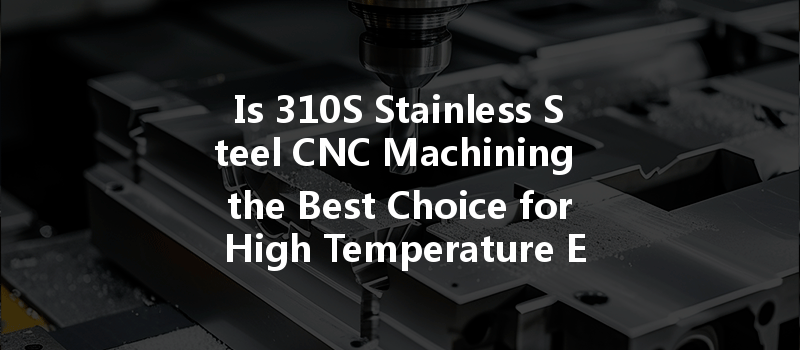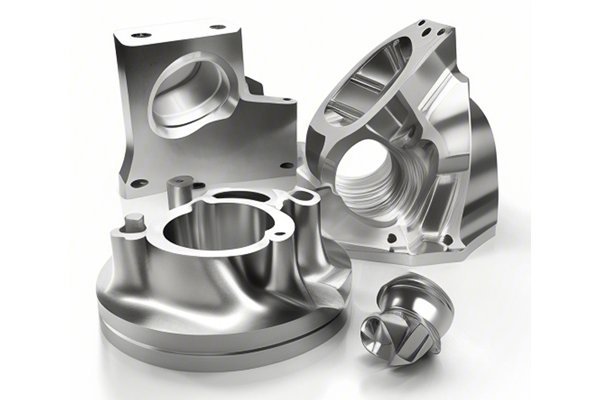: Engaging the Reader
Did you know that the performance of metals can vary drastically with temperature changes? For instance, components made from ordinary stainless steel may weaken and lose their structural integrity under extreme heat. In contrast, specific alloys, like 310S stainless steel, are designed explicitly for high-temperature applications, making them an asset in sectors such as aerospace, power generation, and chemical processing. But how does CNC machining fit into this equation? Is 310S stainless steel CNC machining indeed the best choice for high-temperature environments? This blog will delve into the properties of 310S stainless steel, the advantages it offers when machined via CNC methods, and the considerations necessary for successful machining in high-temperature applications.
—
Understanding 310S Stainless Steel
What is 310S Stainless Steel?
310S stainless steel is an austenitic alloy known for its excellent resistance to oxidation and corrosion at elevated temperatures. It contains a high percentage of nickel and chromium, giving it exceptional strength and durability under extreme conditions. Specifically, 310S stainless steel can handle temperatures up to 2100°F (1150°C) intermittently, and it is often used in furnace applications, petrol refining, and gas turbines.
Key Properties of 310S Stainless Steel
The Role of CNC Machining in High-Temperature Applications
What is CNC Machining?
CNC (Computer Numerical Control) machining is a manufacturing process where pre-programmed computer software dictates the movement of production equipment. This technique is widely used to create complex parts and components with high precision. In high-temperature applications, CNC machining is crucial for achieving the necessary tolerances while maintaining material integrity.
Advantages of CNC Machining 310S Stainless Steel
Challenges in CNC Machining of 310S Stainless Steel
While CNC machining provides many advantages, there are also unique challenges when machining 310S stainless steel, particularly for high-temperature applications.
Because 310S stainless steel is tough and abrasive, it can cause rapid tool wear, thereby increasing production costs.
Solution: Regularly monitor tool conditions and use high-quality, durable cutting tools designed specifically for machining stainless steel. Coated tools can also help reduce wear.

Machining generates heat, which can lead to thermal distortion of the part being worked on and adversely affect surface finish.
Solution: Implement efficient cooling systems and lubrication to dissipate heat during machining. Flood cooling or using specialized cutting fluids can significantly enhance performance.
The type of chips produced when machining 310S can be problematic due to their size and hardness, which can impact the machining process.
Solution: Utilize optimized cutting parameters and tool geometries to improve chip formation and control. Make adjustments based on real-time observations for better efficiency.
Best Practices for CNC Machining 310S Stainless Steel in High-Temperature Environments
Choosing the right batch of 310S is crucial. Ensure that the material meets the necessary industry specifications and grades.
Adjusting cutting speed, feed rate, and depth of cut can significantly affect performance in CNC machining:
Select high-performance carbide or CERMET tools with suitable coatings (e.g., TiAlN or TiN) to enhance tool life while reducing friction and wear.
Employ advanced cooling methods like cryogenic cooling systems or high-pressure coolant systems. These approaches minimize thermal distortion and the risk of warping.
Consider post-machining treatments such as stress relief annealing to minimize residual stresses in the material, particularly after significant machining.
: Why 310S Stainless Steel CNC Machining Matters
In summary, 310S stainless steel CNC machining is not just an option; for specific high-temperature applications, it is often the best choice. Its exceptional resistance to oxidation, corrosion, and thermal stability makes it an essential material in various industries. Understanding the intricacies involved in machining this alloy—such as managing tool wear, thermal effects, and chip formation—is crucial for achieving high-quality results.
As we’ve explored, employing best practices and advanced techniques significantly enhances machining efficiency and product quality. Choosing 310S stainless steel and utilizing effective CNC machining processes can ensure that parts perform reliably in extreme environments.
Final Thoughts: The importance of this topic extends beyond production; it touches on the safety, reliability, and efficiency of industries that depend on high-temperature applications. Readers should recognize the vital role that materials choice and machining techniques play in ensuring that components meet strict operational standards. By thoughtfully considering these factors, engineers and manufacturers can confidently push the boundaries of innovation in their respective fields.






